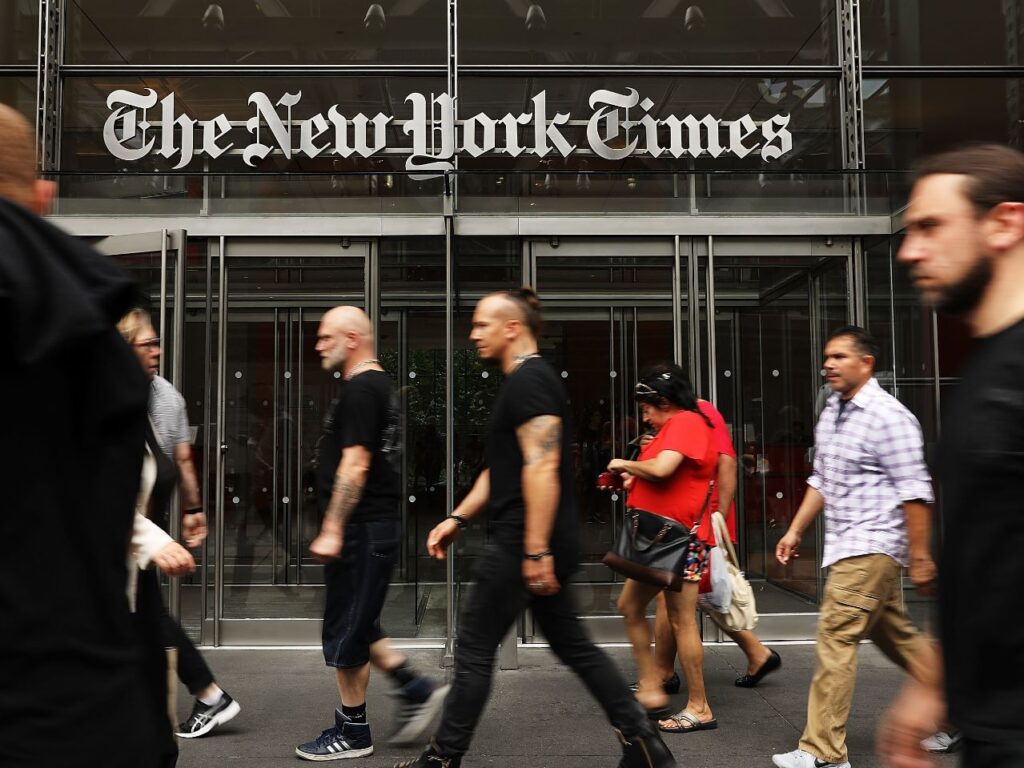
NYT, BBC fall into the pattern
Anti-Hindu, India propaganda unleashed with intent, based on agenda. Their journalistic pursuits come under scrutiny
It is not India’s proud tradition of a free press that is at stake. It’s anti-India and anti-Hindu propaganda unleashed with impunity by certain media houses that has taken centre stage.
First, it was the BBC that went whole hog against Hindus and India. Now, The New York Times has joined the bandwagon of some international media outlets that have been on campaign mode against India, Hindus and Prime Minister Narendra Modi as their whipping boy.

If the NYT editorial board claims of ‘shrill Hindu nationalism’ being the culprit for anything purportedly to have happened to press freedom in India, it’s grossly wrong.
The New York Times editorial board comment in its edition of February 12, 2023 on the issue of press freedom in India is completely flawed seeking to set a particular narrative.
Sweeping remarks on purported ‘Intimidation, Censorship, Silence or Punishing independent news media in India’ is not factually correct, untrue and a figment of Imagination.
India toeing an independent alternative line on issues different from left leaning self-proclaimed liberalists cannot be dubbed as anti-press freedom.
Hindus worldwide and in India believe, profess and push for an open, transparent and clean diverse society governed sans corruption, nepotism and exclusivity. India celebrates oneness in its diverse amalgamation of cultures, religious faiths under the Sanatan Dharmic umbrella. Thousands of years of classical civilizational heritage is testimony to Hindus ‘all embracing’ nature and spirit.
Not understanding Hindus from their perspective leads to a false notion of ‘shrill nationalism’ kind of narratives that are superficial and erroneous.
Neither France based Reporters without Borders (RSF) has the means, bandwidth, methodology or credible data to prove that press freedom was at stake in India. NYT justifying its editorial comment on the questionable World Press Freedom Index report of this organization seems to be fuelled by anti-India and anti-Hindu agenda nursed carefully to meet its objective.
If hitting at the famed growth story is the objective, then The New York Times should definitely know that India is invincible and the fake narratives may not work.
Leave alone the downgrading India on Press Freedom Index, even the Indian map has been displayed wrongly by the Reporters Without Borders. NYT\’s editorial comment is based on reports that depict Kashmir without acknowledging the illegal occupation by Pakistan and China’s occupation of Aksai Chin areas of the North Eastern Indian region.
The New York Times editorial backed a BBC documentary that was aggressively anti-Hindu and anti-India in nature. This was called out by British Member of Parliament Bob Blackman who described the BBC documentary as ‘poor journalism, badly researched’.
Leave alone The New York Times, even the BBC cannot deny its left wing bias and accept an alternative, independent philosophy of Hindus based on ‘Vasudhaiva Kutumbakam’, world as one big family. BBC’s left wing bias is known to Britishers.
In Margaret Thatcher’s government of ‘80s, several members of the British Parliament brought home this point. Conservative MP Tebbit had aptly described the BBC as ‘stateless person’s broadcasting corporation’. Another conservative MP Peter Bruinvels termed the BBC as ‘Bolshevik Broadcasting Corporation’ pointing to Leftists control over the news coverage.
To say that press freedom came under attack after 2014 following Narendra Modi’s ascent to be Prime Minister and Hindu nationalist shrillness is again grossly misguided and propagandist owing to a colonial mind-set of extreme nature.
Late Prime Minister Smt Indira Gandhi had banned BBC from India coverage on two occasions owing to its ‘biases’ in its earlier documentaries also. Perhaps, NYT may not have a plausible explanation for such a ban in late ‘70s.
The BBC was in trouble in India in the early 1970s. Even at that time, the Indian diaspora was outraged by BBC documentaries named Calcutta and Phantom India. Louis Malle directed French documentary mini-series Phantom India painted a biased picture of India by emphasising the underdeveloped regions as opposed to the developing ones.
If Press freedom was under attack as propagated by BBC and NYT, how’s it that the editorial in The New York Times was not taken down?
Thousands of stories filed by a strong network of foreign media professionals based in India that are critical of the government have hit the wires, newspapers and TV outlets freely each day.
So, the charge that India, Hindus and by extension Narendra Modi have suppressed ‘free media’ is only agenda peddling by some media houses.

